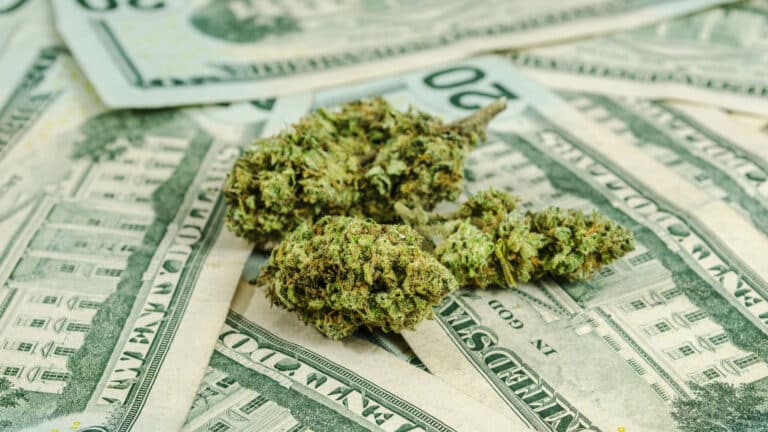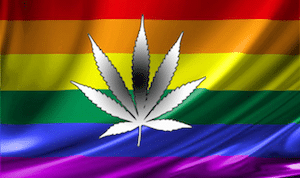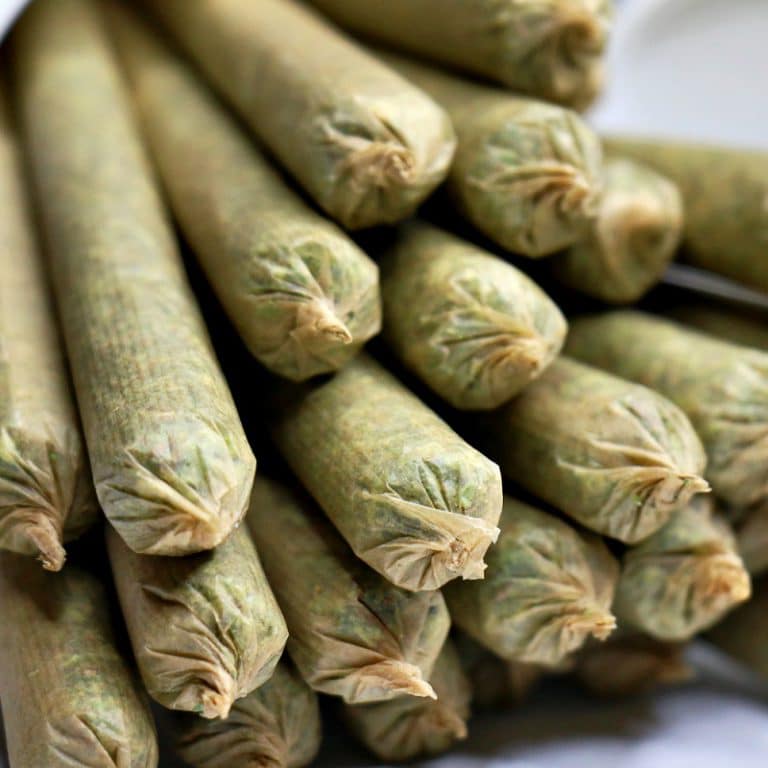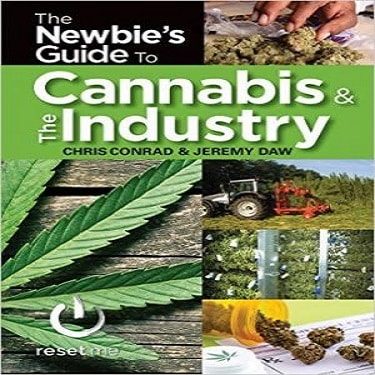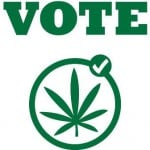 I have been working on an essay for a sociology class in which we were assigned to write about a “social problem.” Naturally, I had to write about marijuana! It’s written in a variation of APA format and I thought I might as well submit it so some of our readers could read it…maybe steal it for an assignment you’re putting off…feel free to critique as much as you want; after all, I am a student and that is how I learn.
I have been working on an essay for a sociology class in which we were assigned to write about a “social problem.” Naturally, I had to write about marijuana! It’s written in a variation of APA format and I thought I might as well submit it so some of our readers could read it…maybe steal it for an assignment you’re putting off…feel free to critique as much as you want; after all, I am a student and that is how I learn.
And I know I could have expanded a LOT more but it was just a simple school essay. Also, some things, like the Heath/Tulane Study, may have some variations, but I found tons and tons of different information and I tried to compile the info I felt was most credible. Enjoy!
Marijuana is a very prominent and controversial issue in society today. Although many slanderous claims have been made about cannabis in recent history, the truths are slowly starting to resurface. Unfortunately, these truths are under heavy criticism due to the stereotypical view of what people view as the typical “pot smoker.” This skewed perception of a lazy and unmotivated America is the result of over seventy years of propaganda and misinformation spread by private interests who needed cannabis illegal for their own personal gains. As a former marijuana consumer and current administrator for a marijuana activism website, I strongly believe that marijuana should be legalized for all uses.
Using marijuana for medicinal purposes is not a recent discovery. In fact, written references to use medical marijuana date back nearly 5,000 years. Western medicine embraced marijuana’s medical properties in the mid-1800s, and by the beginning of the 20th century, physicians had published more than 100 papers in the Western medical literature recommending its use for a variety of disorders (https://norml.org/index.cfm?Group_ID=5441#f2 Accessed on June 5, 2010). These disorders include pain relief, nausea, glaucoma, and movement disorders. It is also used as a powerful appetite stimulant which helps patients that had HIV/AIDS or cancer patients going through chemotherapy.
Today, thousands of patients are able to use marijuana as an effective method of treatment for their ailments. This is possible because fourteen state governments across the country have acknowledged cannabis’ effective healing properties and legalized its consumption for medicinal purposes with the consent of a licensed physician. However, these patients are at the mercy of the federal government and its authority.
One of the biggest positive impacts that the legalization of marijuana would produce is the reintegration of hemp into our society, and more importantly in current times, our economy. Hemp is a plant that is grown for industrial use only; in fact, hemp contains less that 1% THC and causes no “high” when smoked.
From an industrial standpoint, hemp provides many advantages over a great deal of current resources that America utilizes. The most common use for hemp is in the production of textile based products. Hemp fibers are considerably strong so that makes it ideal for the production of many products like paper, fabric, and rope. Hemp produces a higher yield per acre than cotton and has a growing cycle of only 100 days instead of 160. Hemp seeds provide more protein than soy, and according to the U.S. Department of Agriculture, you can produce four times as much paper from an acre of marijuana than an acre of trees; plus, marijuana can be harvested at a quicker rate than trees (https://cannabisnews.com/news/14/thread14829.shtml Accessed on June 5, 2010).
But perhaps the most important attribute of hemp is its ability to produce a substantial amount of cellulose. Cellulose is a compound that, in more recent years, has been converted into a biofuel called cellulostic ethanol. This biofuel can power everything that gasoline currently does and is being produced most commonly in the form of “energy crops;” mostly corn and cotton. Hemp holds an advantage though, because it can be produced more frequently than cotton, and it yields four times the amount of cellulose you can get from a corn stalk (https://cannabisnews.com/news/14/thread14829.shtml Accessed on June 5, 2010).
In today’s economic situation, hemp would be a huge revenue creator. Currently, the United States has to import all of its hemp from countries like Canada and China, who have no laws banning the cash crop. Not only would domestic hemp production stop the pumping of American dollars into foreign farmers’ pockets, but it would create a mass amount of jobs for otherwise unemployed Americans. In these times of uncertainty, we need jobs and we need more domestic industry, and hemp can accomplish both of those. Recent times have also shown us the damage that we are doing to our environment and the realization that we can’t depend on fossil fuels anymore. With hemp being a major contributor to the alternative fuels movement, it makes one wonder why it’s still illegal to grow it.
Because of the recent focus on marijuana legalization, many people are looking back to why cannabis was criminalized in the first place. Contrary to popular belief, the reason marijuana was made illegal had nothing to do with health issues. The real reason was simple, good old fashioned, American business.
As the methods for processing hemp into paper and plastics were becoming more readily available and affordable, business leaders including William Randolph Hearst and DuPont stood to lose fortunes. They were faced with either spending massive amounts of money adapting their prominent, timber-based, industries to produce hemp, or be run out of business by the conveniences and low prices that came with these hemp producing innovations. Instead of doing either of these, they both did everything they could to make their competition illegal. This wasn’t as hard as one might think because lucky for Hearst, he also owned a chain of well known newspaper chains. DuPont’s chief financial backer Andrew Mellon was responsible for appointing Harry Anslinger in 1931 as the head of the Federal Bureau of Narcotics and Dangerous Drugs. Hearst’s papers routinely fabricated stories about “marijuana-crazed black men” raping white woman, and with these types of horrifying acts reported all over the media, Anslinger testified before congress that, “Marijuana is the most violence causing drug in the history of mankind.” (https://wafreepress.org/article/090304marijuana.shtml Accessed on June 7, 2010). Later in history, during the Red Scare, Anslinger again testified to congress against marijuana, but this time he stated that marijuana caused people to become peaceful and passive, and the communists would use it to weaken America’s will to fight.
Another major factor to the criminalization of marijuana (and the term “marijuana” itself), was racism. In the 1930’s the Great Depression hit hard, and at the same time an influx of Mexican immigrants were coming into America. Unfortunately, just like modern times, in the 1930’s these immigrants were not greeted with open arms. Just like they are today, Mexican-Americans were accused of stealing work from “honest, hard-working Americans.” Many of these immigrants smoked a Mexican weed called “marihuana.” Marihuana was not cannabis. It wasn’t until William Randolph Hearst used the name for the smokable form of cannabis in his ludicrous newspaper articles that people started to associate Mexicans with the drug, too. People supported making the drug illegal because if the Latin-American people were caught consuming it, they would be deported back to their country of origin.
As a kid growing up, you’re constantly told of the dangers of drugs, and since it is illegal, marijuana is a drug and therefore it is dangerous. Again, the “dangers” of marijuana can be traced back to the 1930’s and the negative propaganda that surrounded it to appease private interests and reinforce racial stereotypes; never on actual dangers to your health. In 1974, Dr. Robert Heath of Tulane University conducted a test in which lab monkeys were given thirty marijuana joints daily to test for harmful side effects. After 90 days, many of the monkeys started to die and the university reported that the monkeys had died from a mass dying of brain cells and they concluded that the consumption of marijuana destroyed the brain. The official test observations and results, however, were withheld from the public for six years until finally, in 1980, they were released to NORML (The National Organization for the Reform of Marijuana Laws) due to a lawsuit NORML had brought to the university. Upon further investigation of the study, it was revealed that Dr. Heath actually pumped the equivalent of sixty-three joints via gasmasks into the monkeys everyday in just a five minute time frame; much more than the first reported thirty joints a day. The monkeys were reported to have died because of brain damage, but in reality they died of suffocation; when the body doesn’t get enough oxygen, one of the first things to start dying off are brain cells (https://www.jackherer.com/chapter15.html Accessed June 7, 2010). To this day, there has been no test like the Heath/Tulane study.
In 2006, alcohol contributed to 85,000 deaths in the United States. In 2000 alone, tobacco contributed to a staggering 435,000 deaths! In the entire history of mankind, marijuana has never been recorded as a cause of death. No one in recorded history has died from the consumption of cannabis (https://drugwarfacts.org/cms/Causes_of_Death Accessed on June 7, 2010). However, marijuana has been linked to short term memory damage and to a slightly reduced lung capacity when regularly inhaled. Although no where near as severely as alcohol, marijuana does also impair judgment and motor skills. As is the same with most other things, those who regularly ingest cannabis usually build up a tolerance to these side effects which makes them even less hindering, but some individuals never fully develop one.
Marijuana is also not as addictive as most media outlets would lead you to believe. The most addictive drug, even above heroin, is nicotine. After nicotine and heroine comes cocaine, and then alcohol. Below that is caffeine, and at the very bottom of the chart is marijuana; less addictive than your can of Dr. Pepper (https://www.druglibrary.org/SCHAFFER/library/basicfax5.htm Accessed on June 7, 2010).
Marijuana laws, as they are now, cost tax payers billions of dollars a year. The taxpayers have to pay for every individual that is sent to prison for possession of marijuana and nothing more. Most people are sent to prison for possession because they are on parole and it is a violation to have any illegal drugs on you or in your system. Because of the three strike rule, they are only three joints away from spending life in prison, which is extremely expensive for the taxpayers; all because of marijuana remaining an illegal drug. Taxpayers also have to pay for every bit of litigation that leads up to the “offender’s” incarceration. It is estimated by a Harvard study, that over $7 billion is spent annually on marijuana prohibition (https://www.prohibitioncosts.org/mironreport.html Accessed on June 7, 2010).
If cannabis were legalized, and then regulated and taxed like other commercial goods, it would bring in huge dollar amounts to the federal government. It’s estimated that the tax revenue generated from marijuana would be upwards of $2.4 billion annually if it were taxed like everyday goods, and as high as $6.2 billion annually if it were taxed like alcohol and tobacco (https://www.prohibitioncosts.org/mironreport.html Accessed on June 7, 2010).
There are many arguments against the legalization of marijuana; many of which I have already addressed. There are some arguments that have more to do with social problems than with personal values or health issues. One prominent argument against marijuana legalization is that if cannabis is made legal, then it will get into the hands of our children. This has been proven untrue; there is even a counter-argument that states it is in fact easier for children to get marijuana than it is for them to obtain alcohol. 35% of students said marijuana was easily obtainable while only 5% said alcohol was easy to obtain (https://stopthedrugwar.org/chronicle-old/106/casastudy.shtml Accessed on June 7, 2010). Many people, including politicians, have agreed with this data taking into account that drug dealers don’t ask for I.D.
Probably the biggest argument against marijuana is that it’s a “gateway drug.” Many people claim that consuming marijuana greatly increases your chance of doing harder drugs like cocaine and heroin. This is a textbook example of a “post hoc ergo propter hoc fallacy.” This informal fallacy occurs when one assumes the temporal order of events supports their casually being related. Just because most people that do hard drugs started with marijuana does not mean that marijuana will cause people to do harder drugs. If someone wants to experiment with cocaine they are going to do it regardless if they have tried marijuana before. People need to stop putting the blame of heavy drug users onto this harmless plant. No one wants to take responsibility for their actions and own up to their mistakes; everyone looks for the scapegoat. By this logic, you shouldn’t eat meat because it leads to cannibalism. Also, it’s never reported that cigarettes are a “gateway drug.” How many people do you think tried smoking a cigarette or drinking alcohol before smoking marijuana? By the “gateway drug” theory it should be cigarettes and alcohol that are leading people to meth and heroin, not marijuana.
It’s hard to see why cannabis is still illegal in the country. To this day, I have not heard an intelligent argument against the legalization and regulation of cannabis that cannot be quickly dismissed or refuted. Most politicians, I would assume, are worried that supporting this controversial subject would yield negative feedback from their supporters. The public has gotten it into their heads that legalizing marijuana is the same as condoning it, which it is not. One doesn’t have to condone the smoking of marijuana to vote for it’s legalization. The fact is, many people would outlaw fast food, cigarettes, alcohol, and tanning beds because of the harm they cause. But this is America, and America is about freedom and about choice. Give the people in our nation the choice to enjoy marijuana (which is not nearly as dangerous as those four things I just mentioned) without the fear of prosecution or criticism. In these economic times the government should be looking for ways to create jobs, produce ongoing revenue, and increase morality of its citizens. Why won’t they overturn this unjust law? Can’t they just expand their minds?
Work Cited
(1999, September 3). CASA Study Finds Marijuana Easier for Teens to Get Than Beer. Retrieved June 7, 2010, from : https://stopthedrugwar.org/chronicle- old/106/casastudy.shtml
(2008). Annual Cause of Death in the United States. Retrieved June 7, 2010, from Drug War Facts: https://drugwarfacts.org/cms/Causes_of_Death
(2010, January 30). Introduction to Medical Use. Retrieved June 5, 2010, from NORML: https://norml.org/index.cfm?Group_ID=5441#f2
Herer, J. (2009). The Emperor Wears No Clothes. Retrieved June 7, 2010, from Washington Free Press: https://www.jackherer.com/chapter15.html
Miron, J. (2005, June). The Budgetary Implications of Marijuana Prohibition. Retrieved June 7, 2010, from : https://www.prohibitioncosts.org/mironreport.html
Murphy, K. (2009, June 3). How Marijuana Became Illegal. Retrieved June 7, 2010, from Washington Free Press: https://wafreepress.org/article/090304marijuana.shtml
(n.d.). Which Drugs are the Most Addictive?. Retrieved June 7, 2010, from Schaffer Library of Drug Policy: https://www.druglibrary.org/SCHAFFER/library/basi
cfax5.html
Urena, A. (2002, November 25). Legitimate Reasons to Legalize Cannabis. Retrieved June 5, 2010, from Cannabis News: https://cannabisnews.com/news/14/thread14
829.shtml




